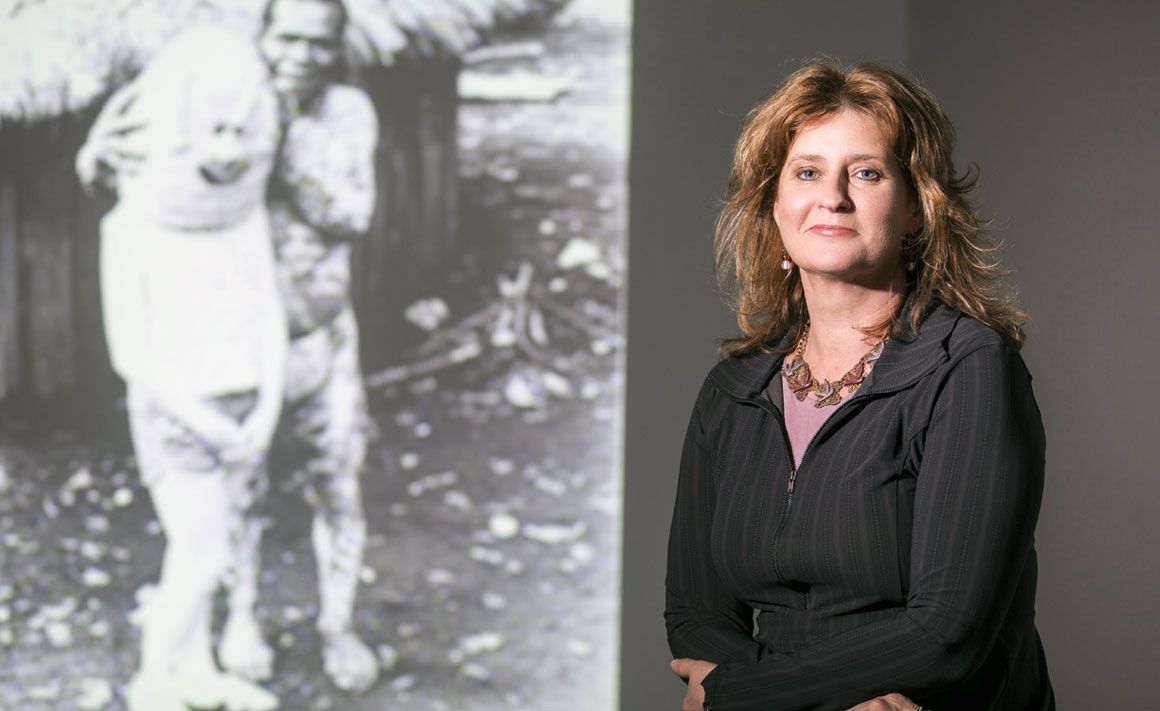
Worldwide collaborations are helping to piece together stories from ancient settlements across Asia and the Pacific.
When Associate Professor Hallie Buckley was just a child, she made a life-changing journey to see an uncle who was teaching in Papua New Guinea.
The experience sparked a growing fascination with the wider South Pacific area, a productive academic career and, most recently, a book summarising the last decade of research into the peoples and their history.
The Routledge Handbook of Bioarchaeology in Southeast Asia and the Pacific is co-edited by Buckley (Anatomy) and Associate Professor Marc Oxenham (The Australian National University) and is due for publication in late 2015.
Topics such as the intensification of farming, population mobility, colonisation, subsistence and health have seen enormous progress recently, thanks to new archaeological finds and global co-operation in data collection, sharing and analysis.
When samples extracted from ancient skeletons are rare, the stories that they tell are precious.
“We need to give these skeletons the best attention that can be given to them.
“So, over recent years, groups of people from across the world have researched collaboratively, not hoarding and guarding data, but working together really well.”
“We have worked towards good healthy collaborative relationships and they have resulted in a very productive list of publications.”
Following her formative experiences in Papua New Guinea, Buckley studied anthropology, specialising in how people lived in the past, how they colonised new lands and how what they found to eat affected their health.
Research into the Lapita people, who lived around 3000 years ago when humans were moving from South-East Asia into Oceania, helped show how early colonists reacted to the pressures of adapting to new tropical environments.
Unfortunately, skeletons in museums were few and far between, but in 2004 excavations from the Teouma cemetery site in Vanuatu presented opportunities for substantial new information.
“For the past 10 years we have been using stable isotopes and other information from bones and teeth to gather data to reconstruct their diet and their health and see what we can learn about their lives.”
The work has attracted multinational collaboration and expanded to cover populations in other places such as Papua New Guinea and more recent sites in Tonga and Fiji.
“These projects always bring people from all over the world to work both on site and afterwards to put the pieces together.”
As the Pacific databases grew, it became increasingly relevant to investigate peoples who pre-dated the Lapita-associated finds – before the move east from Asia.
A neolithic burial ground on the Indonesian island of Flores, although only roughly contemporary with the Lapita, helped bridge the gap between mortuary practices in Asia and Oceania.
Most recently, Buckley has been working on older sites in Vietnam and Thailand. The Con Co Ngua site in north Vietnam has been dated at around 7000 years old.
“With nearly 200 skeletons from a riverside community, this is an amazing example from the period. We had teams of experts from different disciplines collecting data.
“The site is a pre-farming village that was still living a hunter-gatherer lifestyle, while groups just north of them were starting to develop agricultural practices. The two were roughly contemporary.”
In Thailand the late iron age site of Non Ban Jak shows the beginnings of social inequality. Two burial mounds reveal two levels of social standing – people with wealth and common people who had to work to produce food for them.
“The workers showed how exposure to intense rice production, water and large animals increased the chances of diseases and traumatic injuries. We see this worldwide. When you get increases in agriculture you see a deterioration of health.
“The site shows a real transition, people on the cusp of something new and different.”
It's also unusually well preserved. “Pretty much for the first time you can see evidence of a town plan, kilns for pottery production, beautiful gold and semi-precious stone jewellery, and exquisitely preserved skeletons. It's really exciting.”
FUNDING
- Marsden Fund
- University of Otago